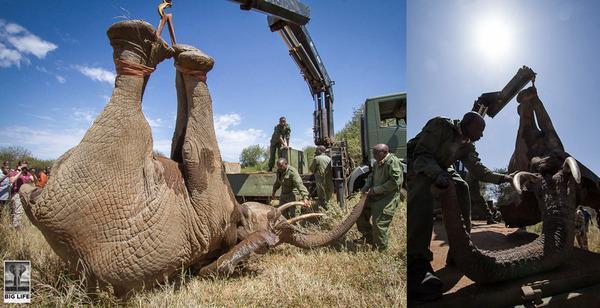
Weighing in around 5 tons, it’s amazing how quietly an elephant can approach. But the sound of one of these animals destroying your source of income will wake anyone. A herd of elephants can cost you $10,000 in crop destruction in a night.
That’s why each night - across the ecosystem where farmland meets wildlife habitat - we have teams on the red-eye shift: the darkness following midnight usually brings the most activity. We have dedicated rangers - that respond to calls for help, in vehicles and on motorbikes, and try to get there before the damage is done. We use harmless methods to scare the elephants away from the farms - a combination of bright torches and firecrackers.
In most cases these methods work, but just as you get stubborn humans you get stubborn elephants. These belligerent individuals will actively go for the source of the irritants, and trample anything or anyone in their way.
Thus it is with huge relief that we thank the Kenya Wildlife Service (KWS) for translocating one such animal this last week. This individual elephant had killed a person, and was responsible for huge amounts of crop damage. He was doing immeasurable harm to the continued tolerance for his species in this area. The operation was quick and efficient. A dart from a helicopter, a crane-lift on to a truck, and transport to a remote area where he will hopefully be out of trouble.
The poaching crisis may eventually be overcome, but people are not going anywhere, and neither is conflict between elephants and humans. In the past the solution to these ‘problem’ animals was usually a bullet; we salute KWS for investing in keeping these animals alive, and at the same time helping us immensely in managing human-elephant conflict in our areas.
- Jeremy Goss, Big Life Kenya
